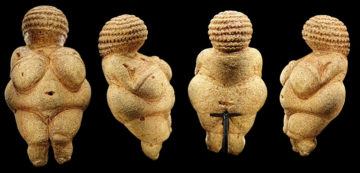Ian Gilligan in aeon:
 Archaeologists and other scientists are beginning to unravel the story of our most intimate technology: clothing. They’re learning when and why our ancestors first started to wear clothes, and how their adoption was crucial to the evolutionary success of our ancestors when they faced climate change on a massive scale during the Pleistocene ice ages. These investigations have revealed a new twist to the story, assigning a much more prominent role to clothing than previously imagined. After the last ice age, global warming prompted people in many areas to change their clothes, from animal hides to textiles. This change in clothing material, I suspect, could be what triggered one of the greatest changes in the life of humanity. Not food but clothing led to the agricultural revolution.
Archaeologists and other scientists are beginning to unravel the story of our most intimate technology: clothing. They’re learning when and why our ancestors first started to wear clothes, and how their adoption was crucial to the evolutionary success of our ancestors when they faced climate change on a massive scale during the Pleistocene ice ages. These investigations have revealed a new twist to the story, assigning a much more prominent role to clothing than previously imagined. After the last ice age, global warming prompted people in many areas to change their clothes, from animal hides to textiles. This change in clothing material, I suspect, could be what triggered one of the greatest changes in the life of humanity. Not food but clothing led to the agricultural revolution.
My recent work shows that clothing wasn’t just the unique adaptation of a more-or-less hairless mammal to the changing natural environments. The development of clothing led to innovations with many repercussions for humanity, beyond survival in cold climates. A need for portable insulation from the cold in the Palaeolithic promoted major technological transitions. These include stone toolkits for working animal hides and, subsequently, bone tools such as pointed awls and needles to make tailored garments. Later, during the coldest stage of the last ice age, Homo sapiens in middle latitudes devised multi-layered outfits with an inner layer of underwear. Equipped with effective protection from wind chill, our species could penetrate into the frigid Arctic Circle, further north than cold-adapted Neanderthals had managed to venture. From the northeastern corner of Siberia, modern humans strolled across an exposed land bridge to enter Alaska by 15,000 years ago, if not earlier, to likely become the first hominins to set foot in the Americas. At the Broken Mammoth site in Alaska, archaeologists have unearthed the fragile technology that made the journey possible: a 13,000-year-old eyed needle.
More here.
